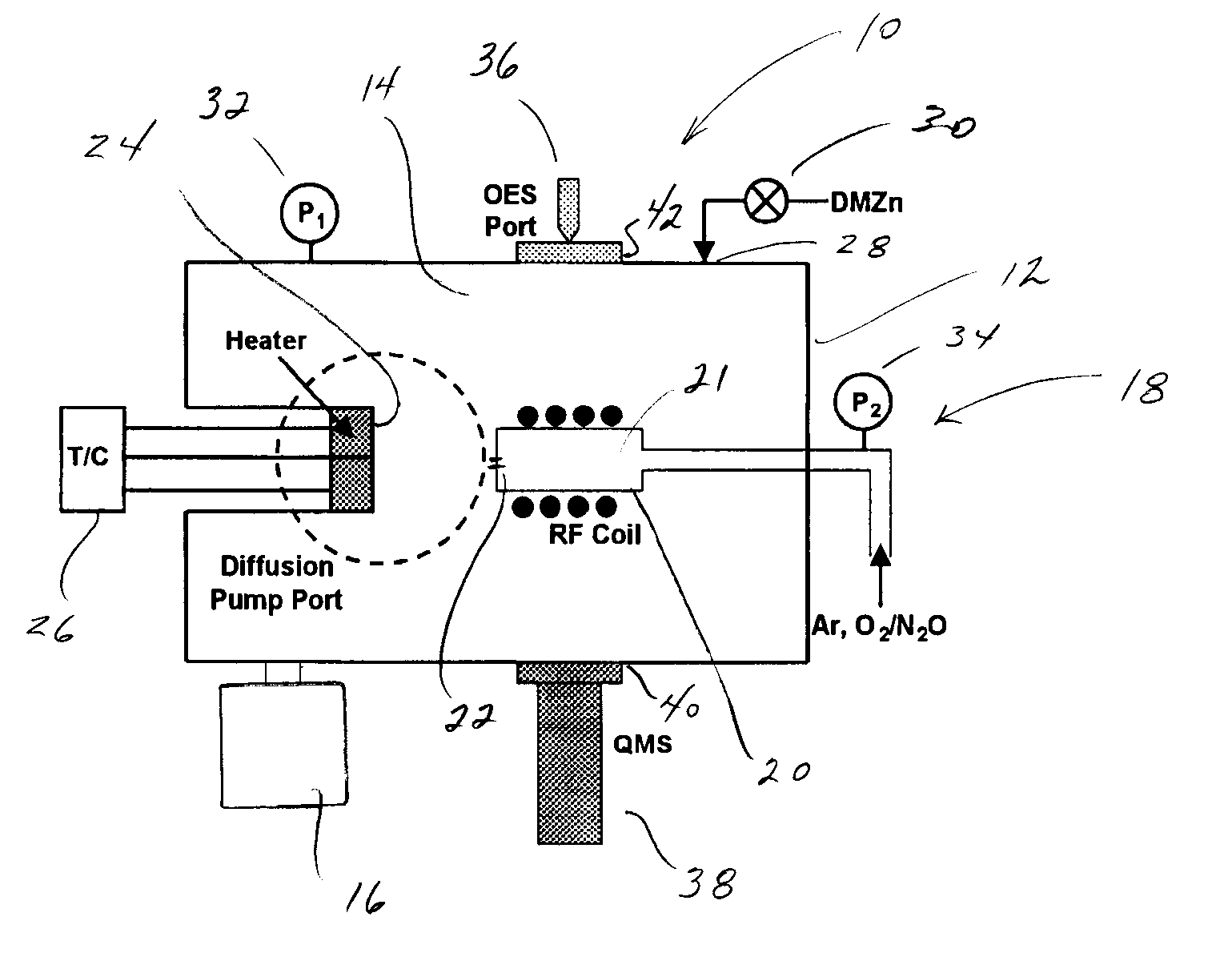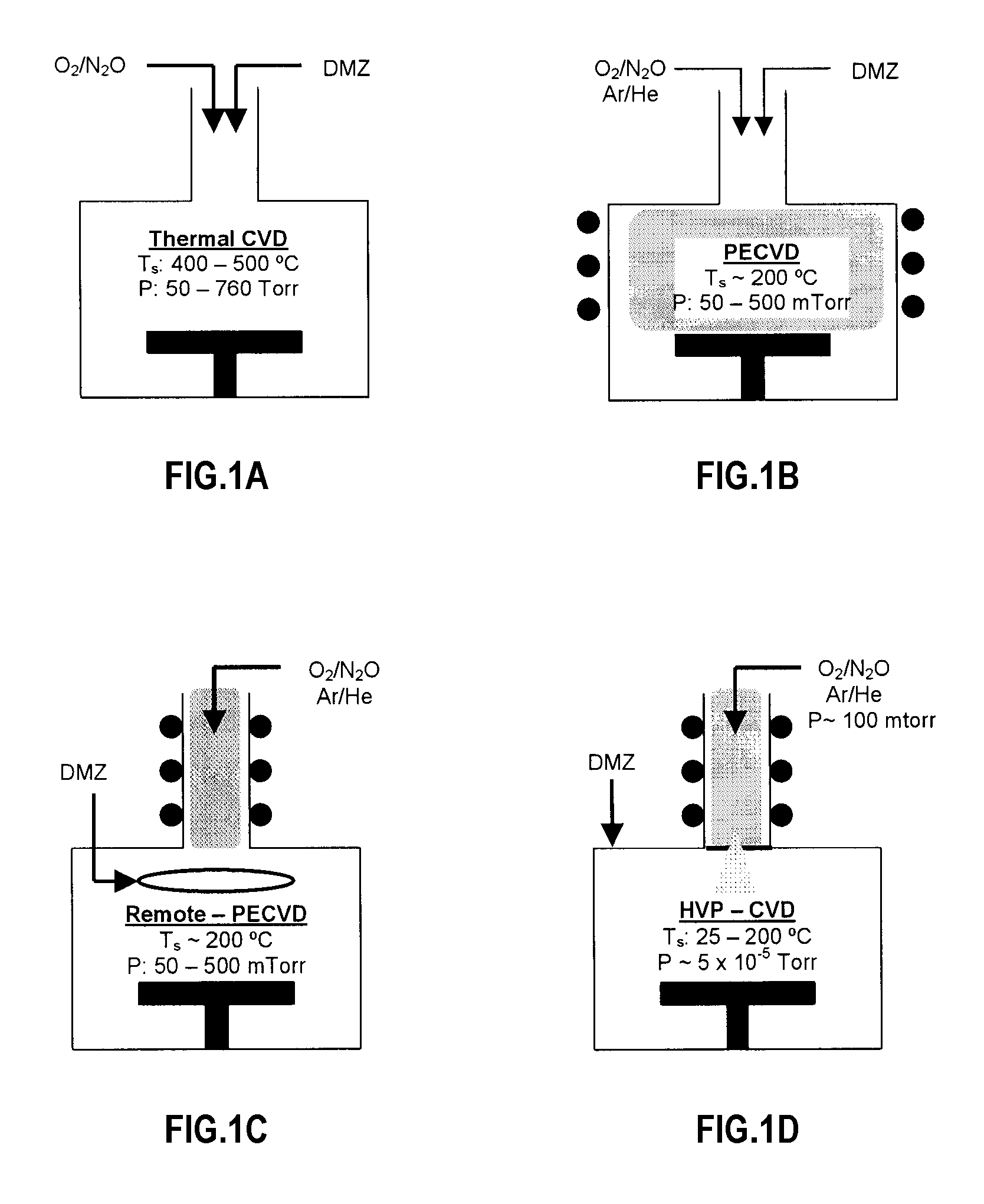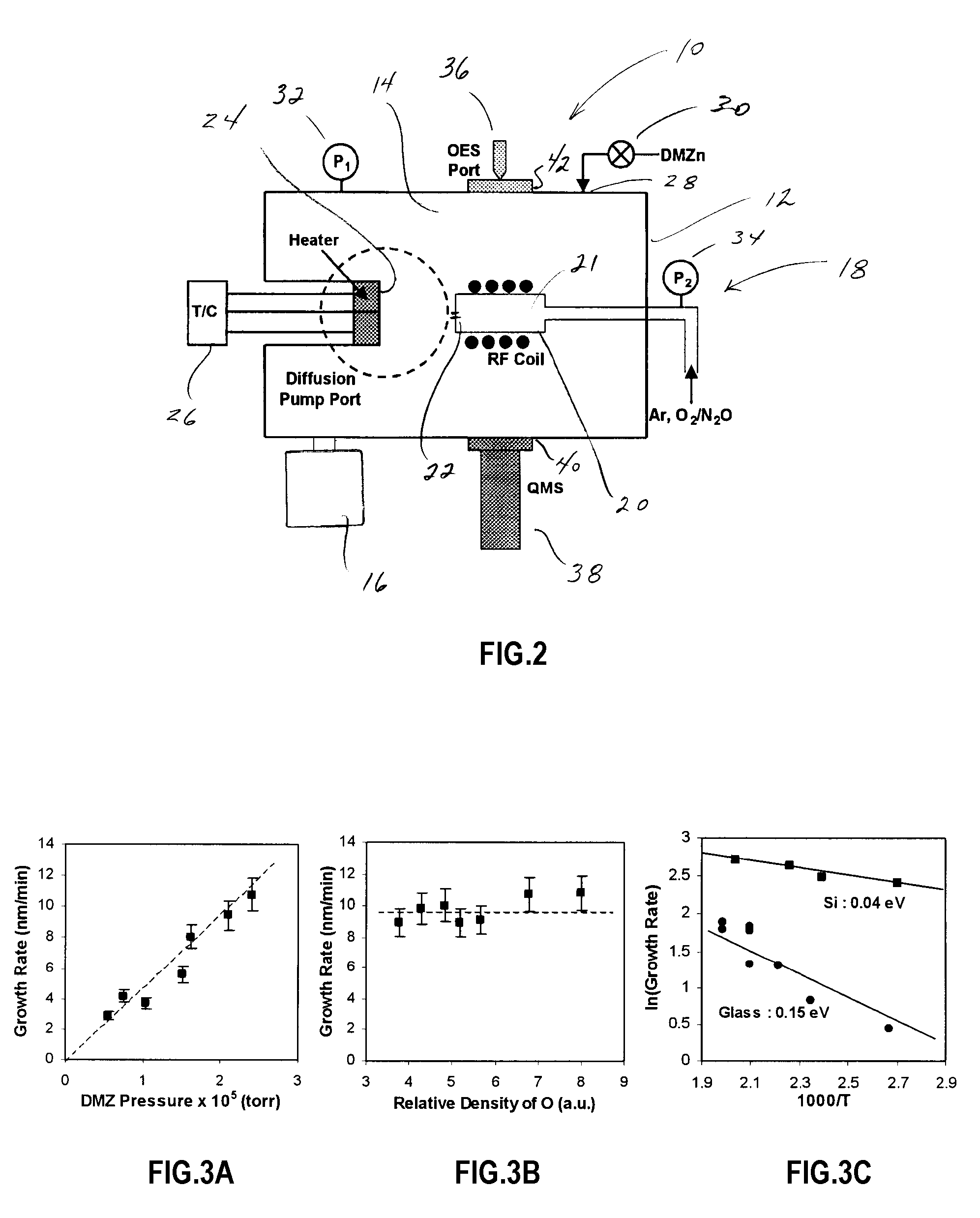High Vacuum Plasma-Assisted Chemical Vapor Deposition System
a technology plasma, which is applied in the direction of chemical vapor deposition coating, plasma technique, coating, etc., can solve the problems of r-pecvd not offering any further temperature reduction, the silicon oxide itself will not be able to meet these performance requirements, and the inclusion of unwanted impurities,
- Summary
- Abstract
- Description
- Claims
- Application Information
AI Technical Summary
Benefits of technology
Problems solved by technology
Method used
Image
Examples
Embodiment Construction
[0019]FIG. 1D is a schematic of a high vacuum, plasma-assisted, chemical vapor deposition (HVP-CVD) system. Like remote PECVD, the plasma is removed from the substrate in HVP-CVD, eliminating or substantially eliminating ion bombardment. Unlike remote PECVD, the reactive species effuse from the plasma into a high vacuum deposition chamber under substantially collisonless conditions. A high vacuum for purposes of HVP-CVD is below about 1 mTorr. In the illustrated embodiment, the high vacuum is approximately 5×10−5 Torr. The organometallic precursor is also introduced into the high vacuum chamber. All other CVD techniques operate under continuum flow conditions where extensive gas-phase collisions and gas-phase chemistry occur. The most important distinction of HVP-CVD is that gas-phase chemistry is eliminated or substantially eliminated, and precursor decomposition occurs exclusively or substantially through surface-mediated routes. It is in many ways similar to plasma-assisted molec...
PUM
| Property | Measurement | Unit |
|---|---|---|
| pressure | aaaaa | aaaaa |
| pressure | aaaaa | aaaaa |
| pressure | aaaaa | aaaaa |
Abstract
Description
Claims
Application Information
 Login to View More
Login to View More - R&D
- Intellectual Property
- Life Sciences
- Materials
- Tech Scout
- Unparalleled Data Quality
- Higher Quality Content
- 60% Fewer Hallucinations
Browse by: Latest US Patents, China's latest patents, Technical Efficacy Thesaurus, Application Domain, Technology Topic, Popular Technical Reports.
© 2025 PatSnap. All rights reserved.Legal|Privacy policy|Modern Slavery Act Transparency Statement|Sitemap|About US| Contact US: help@patsnap.com



